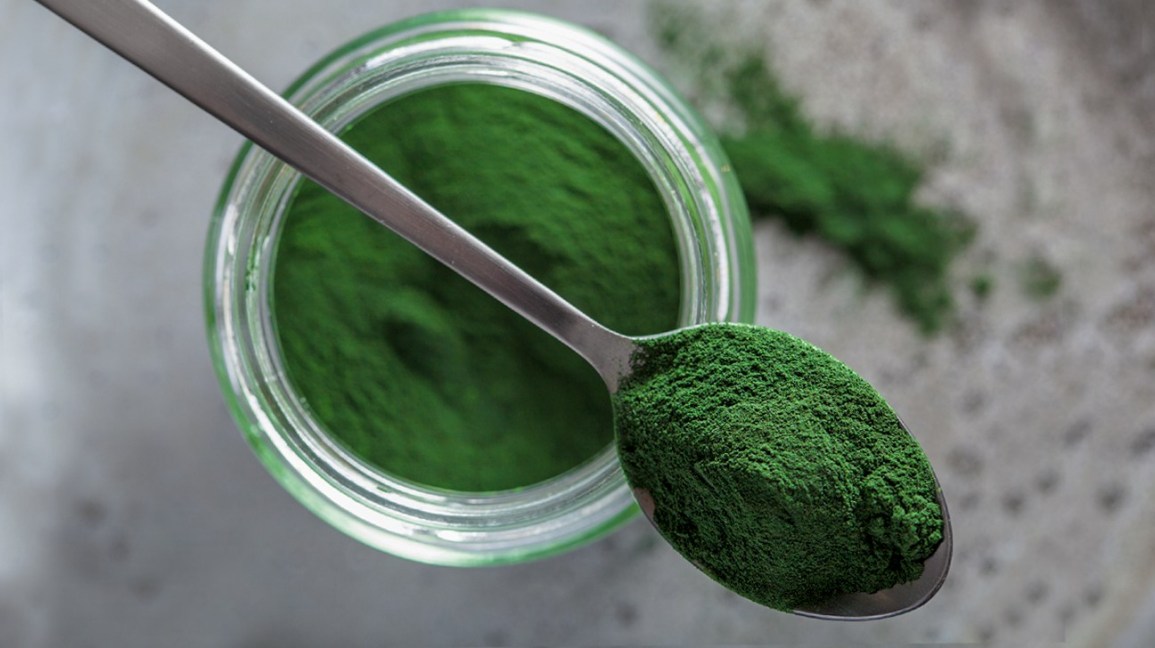Spirulina, a type of one-celled organism, got its name from the Latin word for “helix” or “spiral” because of its spring-like physical characteristic. In the US, spirulina is mostly known as a nutritional supplement or an ingredient to add nutrients to smoothies and green drinks. However, in other parts of the world, spirulina is regarded as a valuable food source to prevent malnutrition.
What Makes Spirulina a Nutritional Superstar
Although spirulina is often described as “blue-green algae,” it is technically a type of cyanobacteria. Cyanobacteria are classified as bacteria because their genetic material is not organized in a membrane-bound nucleus. Unlike other bacteria, they have chlorophyll and use the sun as an energy source, in the way plants and algae do.
One of the special traits of spirulina is its rich protein content—it’s 50 to 70 percent protein by weight (which is even better than red meat, which is about 27 percent protein). It also contains all of the essential amino acids, and 10 of the 12 non-essential amino acids, along with a potent array of other beneficial nutrients, such as:
| B vitamins (including
exceptionally high B-12), vitamin K, and other vitamins |
Naturally rich in iodine | Minerals (including calcium, iron, magnesium,
selenium, manganese, potassium, and zinc) |
| One of best known sources of
gamma-linolenic acid (GLA, an important fatty acid for heart and joints) |
Other essential fatty acids,
including sulfolipids, which may be protective against HIV infection of T-helper cells |
Phytopigments (phycocyanin, chlorophyll,
and carotenoids) |
| Metallo-thionine compounds (proteins combined with metals that bind heavy radioactive isotopes) | Low in carbohydrates (15-20 percent) | Eighteen different amino acids |
In addition to this rich nutritional blend, spirulina has the following special properties:
- The proteins in spirulina are of a highly digestible type (83 to 90 percent digestible), due to the fact that it does not have cellulose walls like yeast and chlorella do. Therefore, the net protein utilization (NPU) is high (between 53 and 61 percent) and requires no cooking to increase the bioavailability of its proteins.
- Studies confirm a very high “protein efficiency ratio” (PER) for spirulina, meaning your body will be able to efficiently use these amino acids.
- Gamma-linolenic acid is rarely this high in ANY food and normally has to be synthesized by your body from linoleic acid. GLA is a precursor to important biochemicals, such as prostaglandins, leukotrienes, and thromboxanes, which serve as chemical mediators for inflammatory and immune reactions.
- Spirulina has no fatty acids with uneven carbon numbers and very low-level branched-chain fatty acids—two types of lipids that higher-order animals, like you and me, cannot metabolize.
- Spirulina has about the same calcium, phosphorus, and magnesium content as milk, a vitamin E (tocopherol) level comparable to wheat germ, and four times as much vitamin B12 as raw liver!
Source: Dr. Mercola
























